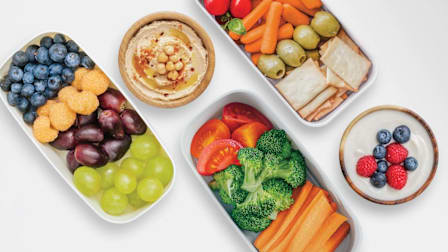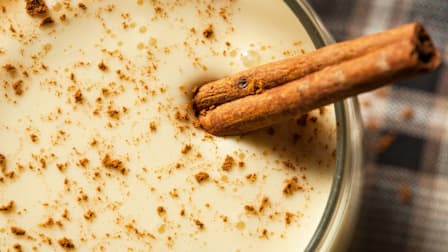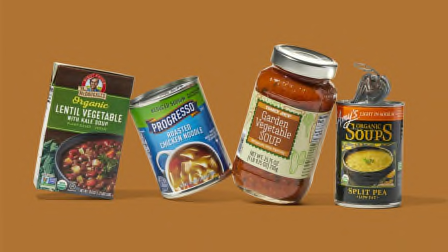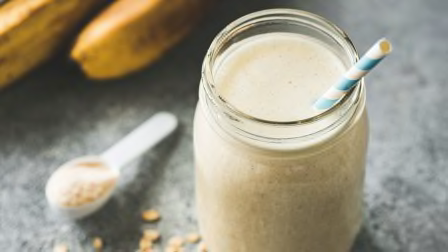5 Healthy Summer Fruits
Try these tasty, creative ways to work them into your diet
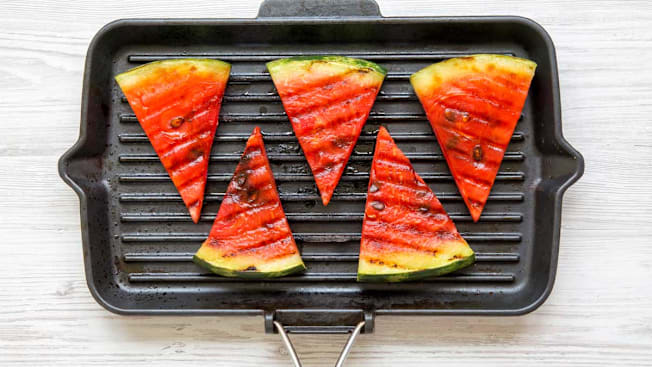
Just 15 percent of people in the U.S. eat the 1½ to 2 cups of fruit every day that health experts recommend. In part, that may be because fresh fruit can spoil quickly, so even as delicious as it is, people may hesitate to buy a lot. One solution is to go beyond eating fruit for a snack or using it to top yogurt or cereal. We asked Jackie Newgent, RDN, a culinary nutritionist and an instructor at The Gourmandise School in Santa Monica, Calif., for ideas about working five summer favorites into your meals.
Apricots
These are a good source of the antioxidant beta-carotene. Antioxidants are compounds that protect the body’s cells from damage that can lead to Alzheimer’s, cancer, and other diseases. Beta-carotene has an additional benefit: Our bodies convert it to vitamin A, a nutrient we need for healthy vision, skin, and more. Fresh apricots have a sweet, tangy flavor that’s a bit different from dried. Three of them have only 50 calories and provide 2 grams of fiber, which helps you feel satisfied and is good for gut health.
Try it: Sauté roughly chopped fresh apricots. Then stir in toasted sliced almonds, a squirt of lemon juice, a little salt, and chopped parsley or mint. Add to cooked rice for a tasty side dish.
Blueberries
Of all the fruits and vegetables, blueberries are one of the highest in antioxidants.
Cherries
Sweet and tart cherries are rich in antioxidants and anti-inflammatory anthocyanins. Both varieties (and tart cherry juice) have been linked to lower blood pressure, better sleep, and reduced muscle soreness.
Try it: Spread sliced baguette toast with ricotta or goat cheese and top with fresh or roasted sweet cherry halves. If you like, top with chopped pistachios, flaky sea salt, chopped basil, and a drizzle of balsamic vinegar.
Plums
The fresh fruit has antioxidant levels that rival blueberries, according to researchers from Texas A&M University. Plums come in a variety of colors. Red-fleshed ones tend to have more antioxidant activity than those with a lighter flesh. Bonus: Plums are usually a great value, especially compared with fruit like berries.
Try it: Slice plums extra-thin, then fan them out on a plate and sprinkle with lemon zest, cracked black pepper, and flaky sea salt. Drizzle with extra-virgin olive oil and enjoy a refreshing fruit carpaccio appetizer.
Watermelon
This quintessential summer fruit is 92 percent water. Just a small wedge has nearly a full cup. Watermelon is also a top source of the antioxidant lycopene, which has been linked to a lower risk of certain cancers. Eating watermelon may even give your overall diet a nutritional upgrade. In national nutrition surveys, adults who ate about 1 cup of watermelon a day, on average, also took in more fiber, magnesium, potassium, vitamin A, and lycopene, and less added sugars and saturated fat than people who didn’t.
Try it: Brush thick watermelon "steaks" with avocado oil or another neutral-flavored oil and grill on medium-high heat for 2 to 3 minutes per side. Sprinkle with lime juice, a pinch of salt, and chopped mint.
Editor’s Note: This article also appeared in the August 2025 issue of Consumer Reports On Health.

















